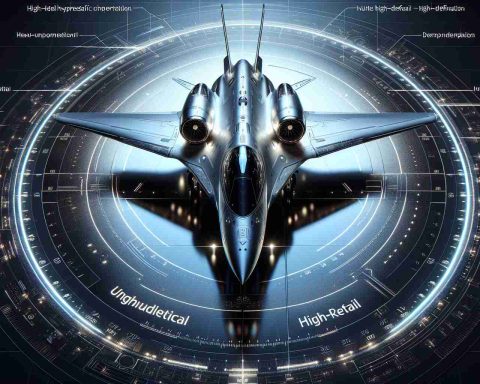In the late 20th century, the U.S. Air Force recognized the need for a new generation of air superiority fighters capable of countering advanced Soviet threats. This realization led to the initiation of the Advanced Tactical Fighter (ATF) program. The competition primarily featured two prototypes: the YF-22A and the YF-23A, developed by Lockheed and Northrop, respectively.
Flight testing revealed significant differences between the two designs. The YF-23A, known for its stealth and speed, opted not to pursue thrust vectoring, prioritizing low observability. On the other hand, the YF-22A showcased exceptional agility and maneuverability, becoming a strong contender.
Ultimately, the YF-22A emerged victorious, with development contracts awarded to Lockheed and Boeing. As the aircraft progressed through its design and testing phases, it received approval for low-rate initial production in 2001, followed by full-rate production in 2005. The F-22A Raptor officially entered service on December 15, 2005, solidifying its role as a premier air dominance fighter for the USAF.
However, the development and operational costs of the F-22A have been a topic of discussion. Estimates indicate total program costs nearing $100 billion, owing to development, production, and ongoing maintenance expenses. This extraordinary investment has sparked numerous conversations in the defense community regarding military budgeting and procurement strategies. The F-22 Raptor continues to be a pinnacle of engineering excellence, reflecting both the challenges and triumphs of military aircraft development.
The Societal Impact of the F-22 Raptor: A Look at Modern Military Aviation
The development of advanced military aircraft such as the F-22 Raptor extends beyond the realms of engineering and combat effectiveness; it significantly influences the lives of people, communities, and even nations. As nations invest heavily in military technology, the repercussions can be felt in various domains, including economics, international relations, and public sentiment regarding defense spending.
Economic Considerations
The staggering cost of the F-22 program, estimated at around $100 billion, raises questions about the allocation of resources in defense budgets. Critics argue that such massive expenditures divert funds from essential services such as education, healthcare, and infrastructure. For communities reliant on government funding, the prioritization of military investment can strain local economies and public services. This debate often intensifies in times of economic downturn, where every dollar spent on military projects is scrutinized for its impact on domestic welfare.
Defense Industry Growth
On the flip side, the F-22 program has contributed significantly to the defense industry, creating thousands of jobs and fostering technological advancements. Regions housing major contractors like Lockheed Martin experience economic boosts from these contracts, driving local economies and innovation. The ripple effect leads to the creation of smaller businesses that supply parts and services to the primary contractors, fostering a thriving ecosystem within these communities.
International Relations and Geopolitical Tensions
The introduction of advanced aircraft like the F-22 also reshapes international relations. Countries watching the U.S. strengthen its air superiority may feel pressured to enhance their own military capabilities, potentially leading to an arms race. The balance of power becomes a critical topic in global discussions, with nations either aligning with or against those acquiring such prowess. This dynamic can strain diplomatic relations, as nations may seek to counteract perceived threats.
The Controversial Role of Military Spending
Public opinion on military spending often sways based on current events. During peacetime, there is a tendency for skepticism regarding the necessity of such advanced technology. The F-22 Raptor has been at the center of this controversy, with some questioning its relevance in modern warfare. The emergence of asymmetric threats, such as cyber warfare and terrorism, has led many to argue that investment should focus on non-traditional forms of security rather than conventional air superiority.
Interesting Facts
1. The F-22 Raptor was designed with a focus on stealth capabilities, allowing it to evade enemy radar systems.
2. It is considered the world’s first fifth-generation fighter, featuring advanced avionics and integrated sensor systems.
3. Despite its operational excellence, the F-22 has only seen limited combat, which fuels debate on its effectiveness in today’s diversified combat scenarios.
As nations continue to navigate the complex landscape of defense spending and military capability, the implications of projects like the F-22 Raptor will resonate in social, economic, and political arenas. Achieving air superiority remains a pivotal component of national security, yet exploring the broader effects of such investments invites ongoing discourse among policymakers and the public alike.
For more insights into defense spending and military technology, visit Defense.gov.
The article has been updated: 2024-11-06 08:40
Here are some suggested related links that you can include in your post titled “The Raptor’s Journey: From Concept to Dominance”:
1. Boeing – Explore the innovations and advancements in aerospace technology from one of the leading aircraft manufacturers.
2. Lockheed Martin – Discover how this defense contractor is shaping modern military aviation and information technology.
3. Northrop Grumman – Learn about their contributions to unmanned systems and aerospace technology, including next-generation fighter jets.
4. U.S. Air Force – Get insights into the aircraft and technology that the U.S. Air Force employs, including next-gen capabilities like the Raptor.
5. U.S. Department of Defense – Stay updated on defense policies, innovations, and the strategic role of advanced aircraft within the military.
6. FlightGlobal – Read in-depth articles and reports on current aviation developments, including military aviation and the latest aircraft innovations.
7. Air & Space Magazine – Discover stories from aviation history and current advancements in technology and aerospace industries.
8. Aviation Week – Follow industry trends, insights, and innovations in aerospace and defense, covering everything from military fighters to commercial aviation.
9. Military.com – Access news and information on the latest military technology, including aircraft and defense systems.
10. Planespotters.net – A hub for aviation enthusiasts to explore various aircraft, including military jets and their specifications.
The article has been updated: 2024-11-06 21:34
What key factors contributed to the Raptor’s transformation from a conceptual idea to a dominant force in its industry?
The transformation of the Raptor from a concept to dominance involved several key factors. Initially, thorough market research identified unmet needs and gaps within the industry, which shaped the design and functionality of the Raptor. Subsequent stages included rigorous prototyping and testing, ensuring that performance metrics exceeded competitor standards. Strategic partnerships with technology suppliers enhanced innovation, while effective marketing campaigns communicated the Raptor’s unique value proposition to potential customers. Additionally, constant feedback from early adopters facilitated iterative improvements, further solidifying its market position. Finally, a focus on customer satisfaction and support fostered loyalty, solidifying the Raptor’s status as a leader in its field.

















